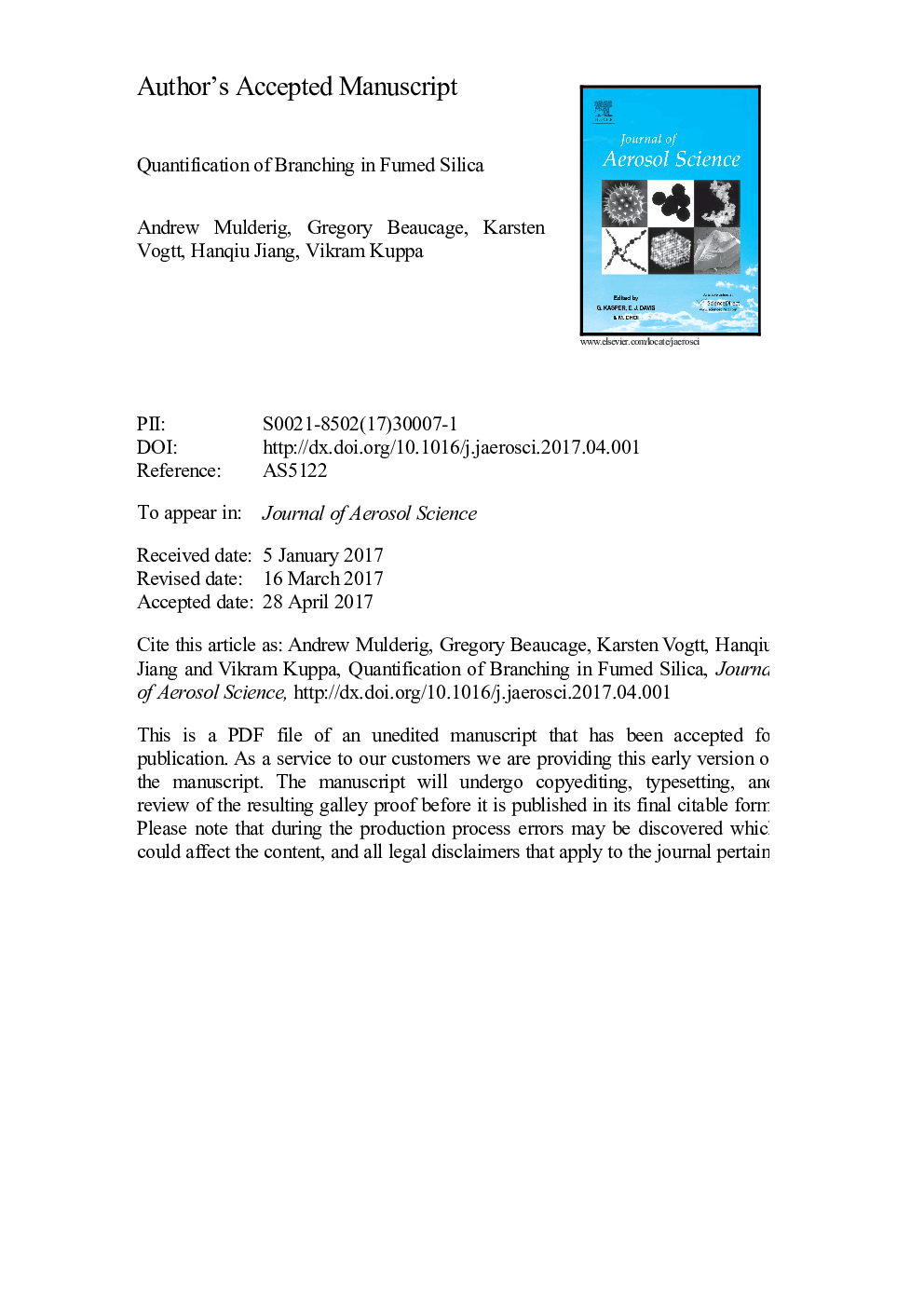| Article ID | Journal | Published Year | Pages | File Type |
|---|---|---|---|---|
| 5753947 | Journal of Aerosol Science | 2017 | 27 Pages |
Abstract
The fractal structure of ceramic aggregates has been widely studied in terms of the mass fractal dimension and primary particle size. However, there has not yet been a quantitative description of the branched topology in these structures. In this work, the highly ramified aggregate structure in six commercial grades of hydrophilic fumed silica is investigated. Ultra-small angle X-ray scattering was coupled to a hierarchical scattering model, the unified scattering function, to obtain topological parameters. These generic topological parameters were used to quantify branching and were then compared with simple aggregation simulations. Surprisingly, a single parameter, the sticking probability, can empirically account for complex topological differences in the materials studied. It is found that samples of higher specific surface area display a higher branch fraction. For grades of highest specific surface area, a hyper-branched structure is observed with extensive branch on branch aggregation. This approach can be used to quantify complex morphological differences in ceramic oxide and carbon black aggregates.
Related Topics
Physical Sciences and Engineering
Earth and Planetary Sciences
Atmospheric Science
Authors
Andrew Mulderig, Gregory Beaucage, Karsten Vogtt, Hanqiu Jiang, Vikram Kuppa,
